Related Research Articles

Zulu people are a native people of Southern Africa of the Nguni. The Zulu people are the largest ethnic group and nation in South Africa, with an estimated 13.56 million people, living mainly in the province of KwaZulu-Natal.

The Adi people are one of the most populous groups of indigenous peoples in the Indian state of Arunachal Pradesh. A few thousand are also found in the Tibet Autonomous Region, where they are called the Lhoba together with some of the Nyishi people, Na people, Mishmi people and Tagin people.

Culture of Uganda is made up of a diverse range of ethnic groups. Lake Kyoga forms the northern boundary for the Bantu-speaking people, who dominate much of East, Central, and Southern Africa. In Uganda, they include the Baganda and several other tribes
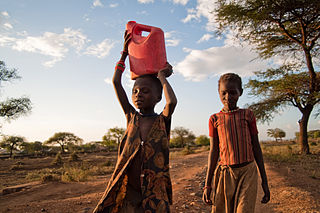
The Karamojong or Karimojong are a Nilotic ethnic group. They are agro-pastoral herders living mainly in the north-east of Uganda. Their language is also known as ngaKarimojong and is part of the Nilotic language family. Their population is estimated at 475,000 people.

Kurdish traditional clothing is a historical and contemporary aspect of Kurdish heritage.
The Mapalé is an Afro-Colombian and Ecuadorian style of dance that was brought over by the slaves and representing the fishermen after a long day of work. Its name comes from the Cathorops mapale (fish) when they are out of the water. The dance moves are compared with the agility and strength of those who are performing it. From the clothing to the precise moves of the hips and shoulders. The body movements during the dance are swiftly made to follow the beating of the drums and represent the fish out of the water (men), while the women are the sea.

The Xhosa people, or Xhosa-speaking people are a Bantu ethnic group native to South Africa. They are the second largest ethnic group in South Africa and are native speakers of the isiXhosa language.
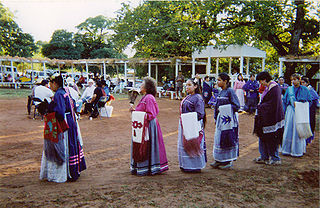
The turkey dance is one of the most important traditional dances among Caddo people. Women dance the turkey dance, while men drum and sing the songs, which describe events in Caddo history.

Babinden is a traditional Bulgarian feast, celebrated on 8 January, in honour of the women practicing midwifery. The traditional word for midwife in Bulgarian is baba, same as grandmother. The holiday has pagan origins and is part of the traditional family rituals.
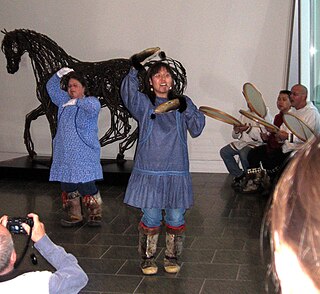
Yup'ik dance or Yuraq, also Yuraqing is a traditional Eskimo style dancing form usually performed to songs in Yup'ik, with dances choreographed for specific songs which the Yup'ik people of southwestern Alaska. Also known as Cup'ik dance for the Chevak Cup'ik dialect speaking Yup'ik of Chevak and Cup'ig dance for the Nunivak Cup'ig dialect speaking Yup'ik of Nunivak Island. Yup'ik dancing is set up in a very specific and cultural format. Typically, the men are in the front, kneeling and the women stand in the back. The drummers are in the very back of the dance group. Dance is the heart of Yup’ik spiritual and social life. Traditional dancing in the qasgiq is a communal activity in Yup’ik tradition. The mask (kegginaquq) was a central element in Yup'ik ceremonial dancing.
The isidwaba, a traditional Zulu leather skirt worn by married women, is made from the hide of animals that belonged to the woman's father. This article will illustrate how the traditional skirt is made and at which occasions it is worn. It further describes the various designs and patterns of an isidwaba and how they are perceived in society, including the symbolic anthropology associations of the isidwaba.

Traditional Inuit clothing is a complex system of cold-weather garments historically made from animal hide and fur, worn by Inuit, a group of culturally related Indigenous peoples inhabiting the Arctic areas of Canada, Greenland, and the United States. The basic outfit consisted of a parka, pants, mittens, inner footwear, and outer boots. The most common sources of hide were caribou, seals, and seabirds, although other animals were used when available. The production of warm, durable clothing was an essential survival skill which was passed down from women to girls, and which could take years to master. Preparation of clothing was an intensive, weeks-long process that occurred on a yearly cycle following established hunting seasons. The creation and use of skin clothing was strongly intertwined with Inuit religious beliefs.

The fashion industry in Nigeria plays an important cultural role and contributes significantly to the country's economy. Clothing incorporates a variety of colours, fabrics, and embellishments. Many of the component cultures of Nigeria wear styles that are characteristic of their tribal society and customs. Nigeria produces fashionable textiles and finished garments and has designers who have achieved international recognition.

Larakaraka is a traditional courtship dance that originated from the Acholi people of Uganda. This dance, among the more than 50 Acholi dances, holds significant importance and is typically performed on special occasions, particularly weddings. Serving as a romantic display of artistry and physical prowess, Larakaraka enables young men to exhibit their dancing skills, vitality, and agility, all with the intention of attracting a potential life partner.
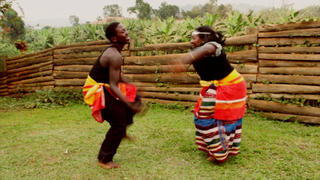
Ekitaguriro aka Cow Dance is a traditional dance originating from Nkore or Ankole region which is located in the South Western Uganda. It is a celebratory dance that is performed by both men and women as an expression of gratitude for their cattle and to showcase local prosperity such as birth, marriage and abundant harvest. It is an integral part of social gatherings and events in the region, symbolizing the deep-rooted cultural significance of cattle in the community.
Bwola, also known as Acholi bwola, is a traditional dance that originates from the Acholi people in Northern Uganda. It is reserved for special occasions and performances in front of royalty, including kings and chiefs. This dance is often showcased during the installation of new chiefs or at various royal functions.
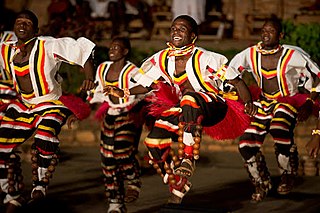
Orunyege-Ntogoro is a traditional dance from the Bunyoro and Tooro kingdoms in western Uganda. It is a courtship dance that involves the use of rattles (ebinyege) and rings (entogoro) to produce rhythmic sounds and movements. The dance is performed by young men and women who seek to attract and impress potential partners for marriage.

Akogo dance is a traditional dance form of the Teso people of Eastern Uganda. This cultural expression is performed by both men and women, who gracefully move their bodies in synchrony with the rhythmic beats of the akogo, a percussion instrument crafted from bamboo tubes of varying lengths. The Dance is believed to have been performed by the Teso people for centuries and has evolved over time and has been influenced by other dance forms from neighboring regions.

Edonga Dance, also known as Edonga, is a traditional cultural dance originating from the Karamajong people, an ethnic group of the Nilotic community residing in the northeastern region of Uganda especially in Kotido and Moroto districts. This dance form is performed by both men and women, accompanied by melodious songs sung in the native Karamojong language. Edonga Dance holds significant cultural importance within the community and heritage of the Karamajong people.
References
- 1 2 3 4 "Uganda: Naleyo dance where women choose their dancing partners – Comboni Missionaries" . Retrieved 2024-01-11.
- 1 2 "Traditional Dances of Uganda - Popular Dances | Guide to Uganda". 2017-08-26. Retrieved 2024-01-11.
- 1 2 "World Cultural Diversity Day: The unique Karimojong culture". New Vision. Retrieved 2024-01-11.
- ↑ Makanga, Samuel (2018-01-26). "UGANDA`S TRADITIONAL DANCES". Prime Uganda Safaris. Retrieved 2024-01-11.
- ↑ "Uganda: Naleyo dance where women choose their dancing partners – Comboni Missionaries" . Retrieved 2024-01-11.